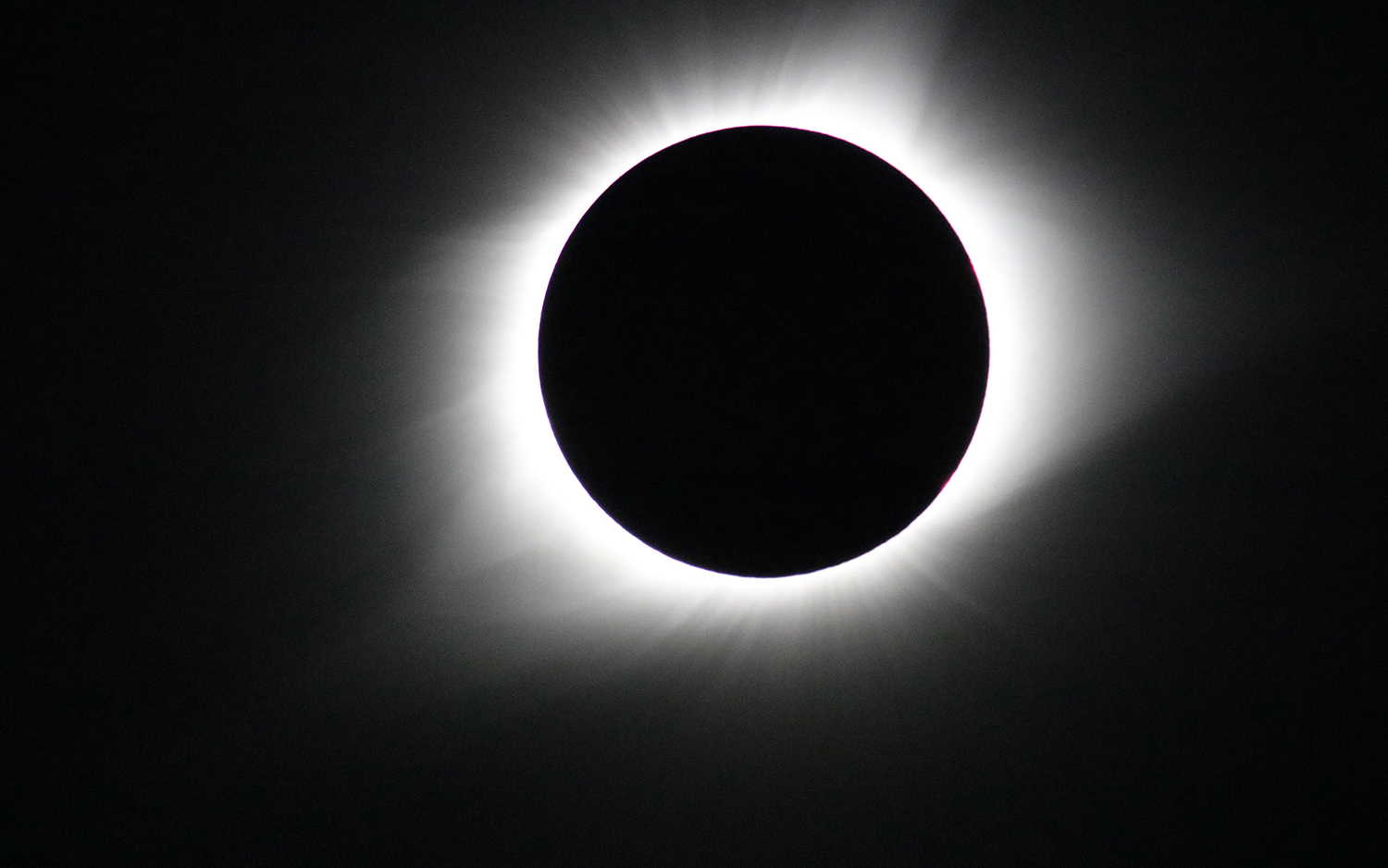There's a Total Solar Eclipse Tomorrow: Here's What You Need to Know

Tomorrow (July 2), a dramatic total solar eclipse — the only one to take place during 2019 — will darken skies over South America, providing viewers with a spectacular view of the sun as the moon crosses in front of it and casts its shadow on the ground below.
Most of the eclipse's path of totality will travel over the southern Pacific Ocean. But when the lunar shadow touches land, the eclipse will traverse parts of Chile and Argentina in a journey lasting about 6 minutes. Millions of people in those nations will experience the eerie midday darkness of a total eclipse, weather permitting.
Depending on the location, totality (when the sun is completely dark) will last up to 4 minutes and 3 seconds, according to NASA. A partial eclipse will be visible to people in Bolivia, Peru, Ecuador, Paraguay, and Uruguay, and parts of Brazil, Colombia, Panama and Venezuela, NASA reported. [The 8 Most Famous Solar Eclipses in History]
Showtime begins mid-afternoon; the lunar shadow touches land in South America on the western coast, near La Serena, Chile, at 3:22 p.m. local time. Totality begins in La Serena at 4:38 p.m. local time. From there, the total eclipse will travel to the southeast, ending near Chascomús in the eastern Buenos Aires province of Argentina, at 4:44 p.m. local time.
Even if you aren't lucky enough to live in the path of totality, you can watch the eclipse on streaming video, available on our sister site Space.com's home page; on NASA's website, which will stream live views from telescopes in Vicuna, Chile; and on other webcasts.
Space.com reporter Hanneke Weitering is currently sending updates from Chile, where she will be "chasing totality" on the day of the eclipse, driving 90 miles (150 kilometers) from La Serena to La Silla Observatory in La Higuera. There, thousands of people are expected to gather to witness a few minutes of daytime darkness, Weitering wrote.
You won't need protective eyewear if you're watching the eclipse on video, but you should never look directly at an eclipse. Special glasses or handmade viewers are necessary to avoid severely damaging your eyes while directly observing the darkened sky.
Sign up for the Live Science daily newsletter now
Get the world’s most fascinating discoveries delivered straight to your inbox.
On Aug. 21, 2017, millions of people across the U.S. were captivated by the so-called Great American Eclipse. The path of totality touched 14 states and was the first solar eclipse in nearly a century to cross the entirety of the contiguous U.S.
The next solar eclipse to be visible over South America will be on Dec. 14, 2020, NASA reported. North America won't experience another solar eclipse until April 8, 2024, when a path of totality will travel northward from Mazatlán, Mexico, to Newfoundland, Canada.
While there is plenty of time to get protective eyewear for the next American eclipse, if you still have glasses from the 2017 eclipse you can use them again — provided they're undamaged, according to NASA.
- How to Make a Solar Eclipse Viewer (Photos)
- Photos: 2017 Great American Solar Eclipse
- 10 Solar Eclipses That Changed Science
Originally published on Live Science.

Mindy Weisberger is an editor at Scholastic and a former Live Science channel editor and senior writer. She has reported on general science, covering climate change, paleontology, biology and space. Mindy studied film at Columbia University; prior to Live Science she produced, wrote and directed media for the American Museum of Natural History in New York City. Her videos about dinosaurs, astrophysics, biodiversity and evolution appear in museums and science centers worldwide, earning awards such as the CINE Golden Eagle and the Communicator Award of Excellence. Her writing has also appeared in Scientific American, The Washington Post and How It Works Magazine. Her book "Rise of the Zombie Bugs: The Surprising Science of Parasitic Mind Control" will be published in spring 2025 by Johns Hopkins University Press.









